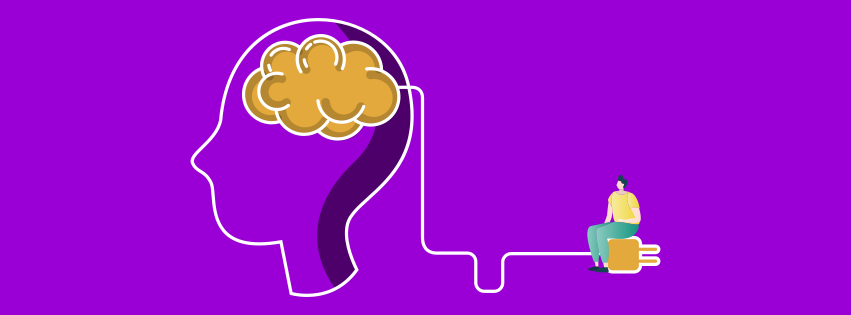LOCKDOWN LEARNING TIPS
For a better memory
Make sure your brain is not in lockdown. The human brain has an astonishing capacity to adapt and change, whether you are a student studying for exams, a working professional who wants to make every effort to stay mentally sharp, or a senior citizen who wants to keep that brain in tip-top shape. You can use your little grey cells to boost your cognitive abilities, improve your learning skills and train your memory. We will explain how your brain works and provide tips for learning during lockdown, to remember things better and faster. Are you reading along with us?
DID YOU KNOW?
The average brain weighs 1.3 to 1.4 kilos. It is made up for 3/4 of water and uses 20% of our oxygen intake. Your brain continues to grow for the first 18 years of your life, but you can get smarter at any age, even when you are 100. We have some 70,000 thoughts per day and our short-term memory can retain up to 7 digits.
How does our memory work?
WHY DO WE FORGET?
Does the notion that ‘it helps to forget’ seem strange to you? Then try thinking of it in the opposite way. Imagine that every detail you perceive stayed in your head forever. After 1 day, your life would have become a nightmare. For simple questions such as ‘Where did I park my car?’ There would be hundreds of possible answers. After all, you would remember every single parking location as if it were yesterday. That is why, as a survival strategy, our super brain has been equipped with a discounting system: we call it ‘forgetting’.
WHY DOES YOUR MOOD AFFECT YOUR MEMORIES?
In your memory, an event is always connected with and intertwined with other events, emotions and memories. When you relive the event, that reliving partially replaces the original memory. New emotions are attached to the old story, so to speak. In other words, if you often talk about an important event in your life, the story changes slightly each time.
How can you remember things better?
USE IMAGERY
Names and numbers are difficult to remember because they are abstract. Images are much easier to store in are brains. One tip for remembering things better is to visualise that abstract information. The crazier the image, the better you will remember it.
This is how to do it:
You meet your new co-workers. In order to remember their names, you should associate each one with an image. For ‘Anna’ for example, you could think of a ‘banana’, for Mary, a ‘berry’ and Dan could be a ‘can’. You can remember numbers in the same way. Associate the numbers with a picture or, even better, with a theme.
THE MENTAL ROUTE, ALSO KNOWN AS THE MIND PALACE
How does it work? In your head, you imagine a route that you know like the back of your hand. It could be your route to work or through your house, for example. You follow this imaginary route and decide where to store the information. Afterwards, you will link the words that you need to remember to the route. The crazier the image, the better. For example, do you need to memorise the names of the Belgian kings? Then have King Leopold III ring the doorbell three times, hang Boudewijn on the coat rack, put Albert in the bathtub and have Filip fry up a royal egg. Bet you’ll never forget them again!
MNEMONICS
Mnemonics helps you to store certain information quickly and keep it easily accessible. There are 2 techniques for doing this. By associating the word you need to remember with another word with the same first letter or by creating easy to remember abbreviations.
Do you remember ROY G BIV? Those are all the colours of the rainbow: Red, Orange, Yellow, Green, Blue, Indigo and Violet. Here’s another one for remembering the first ten elements of the periodic table: Happy Henry Likes Beer But Could Not Obtain Four Nuts (Hydrogen, Helium, Lithium, Beryllium, Boron, Carbon, Nitrogen, Oxygen, Fluorine, Neon). It’s still the most popular study techniques among university students.
SHARE WHAT YOU HAVE LEARNED
The best way to learn something is by explaining it to someone else. That could just as well be a fictional person (or a teddy bear in the lockdown period). If you have to explain what you have learned, you’ll be forced to structure the information logically. Moreover, you will immediately notice the strengths and weaknesses in your own way of thinking.
CHUNKING
Grouping pieces of information into recognisable patterns in order to make them easier to remember is a method known as chunking. For example, try memorising this number – 8945557307. This is 10 digits. Most people can only remember 7 digits, and there is a neurological reason for this. Our working memory is wired for approximately 7 chunks of information. Now try memorising the number as 894-555-7307. The more effective the groupings are and the more familiar the patterns, the better this technique works. The phenomenon of chunking goes beyond memorising pieces of information. We also break up motor skills, by dividing a complex task into a series of definable combinations of movements.










